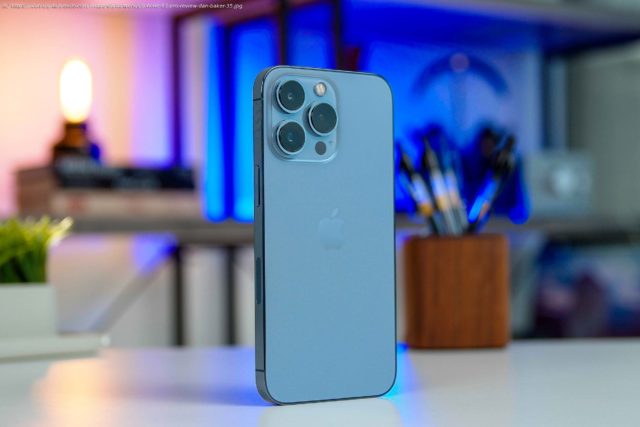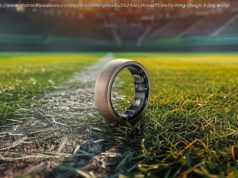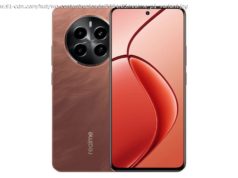The iPhone 13 Pro is the best model you can get in the lineup thanks to the 120Hz display, excellent camera, oodles of storage, and endless battery life.
I’ll say it upfront; the iPhone 13 Pro is the new iPhone model you should buy if you can afford it. Unlike last year’s iPhone 12 Pro, it has all the same capabilities as the larger Pro Max model. You’ll remember that last year, the 12 Pro Max had bigger camera sensors, giving it better lowlight performance and 3x optical zoom, rather than 2x. Not so this year. The iPhone 13 Pro has all the guts of the 13 Pro Max (aside from battery capacity and screen size, of course) without busting your hand or your wallet. Add into the mix the powerful A15 Bionic processor,120Hz ProMotion display, battery life that can last almost two days, and excellent camera performance, and you get the best iPhone 13 model in the entire lineup. The iPhone 13 Pro I reviewed came in gold, which isn’t my color of choice, but you work with what you have. Both the front and the back are protected by Ceramic Glass and there’s a squared-off stainless steel strip running along the sides, setting it apart in quality from the cheaper aluminum of the iPhone 13. All the standard buttons are present including the Ring/Silent switch and volume buttons on the left and the Side button on the right to activate Siri and toggle the screen on and off. There are also bottom-firing speakers on either side of the Lightning port. As I’ve pointed out with other iPhone 13 models I’ve reviewed, it’s a letdown to see Apple continue to stick to Lightning, especially when most people largely have USB-C devices. But I hold out hope that Apple will make the change for next year’s model. The iPhone 13 Pro measures 5.78 x 2.81 x 0.3 inches and weighs 7.2 ounces. Those are more or less the same dimensions as the iPhone 12 Pro (5.78 x 2.82 x 0.29 inches), but it tips the scale at almost an ounce heavier (6.66 ounces) due to the additional battery capacity and telephoto lens, both of which are welcome additions that are worth the extra weight. In terms of usability, I found it to be as usable as the iPhone 13 — you can navigate it with one hand and reach across the screen. It’s only with the Pro Max that you start pushing the limits of one-handed use. Like all the other iPhone models, the iPhone 13 supports IP68 dust- and water-resistance. I confess that came into play more often than I expected because the phone took a few spills in the park while I was juggling devices around during testing. That’s also how it picked up a gouge on the screen despite the Ceramic Glass protecting the front. It’s usually not visible unless the light reflects on it just so and it doesn’t impact usability. And if you’re more careful than me and not doing a circus act in the park (or you are using a case or screen protector), you likely won’t suffer from this issue. In terms of physical differences between the iPhone 13 Pro and iPhone 12 Pro, there aren’t too many. The TrueDepth sensor has a 20% smaller notch on the screen according to Apple, which is true, but it’s also a bit deeper, and as far as I could tell, it doesn’t add a meaningful amount of usable screen real estate. As always, there’s Face ID, which I generally found to be hit-or-miss when wearing a face mask. You can do some alternate face scans to make it work better, but it also isn’t as secure, so I decided not to go for it. On the back, the sensor array is pretty similar to last year. There’s a vaguely square camera housing and three cameras. The only notable difference is that each camera sensor is bigger, and the camera bump protrudes a bit more. That’s a fair trade-off for the improved camera performance in my estimation. There are a lot of selling points for the iPhone 13 Pro, but one of the biggest is the screen, and we don’t mean in just size. Like the iPhone 13, it’s a 6.1-inch Super Retina OLED screen with great color accuracy,2532 x 1170 resolution, and 460 pixels per inch. It’s sharp, bright viewing angles are great, it can hit 1,000 nits in brightness, and punch up to 1,200 nits for HDR content. Outdoor visibility is excellent even in direct sunlight, and the screen also supports HDR10 and Dolby Vision. That’s all fantastic, but what really sets it apart is the 120Hz ProMotion display. ProMotion is a technology that first hit the iPad Pro series in 2017, letting Apple increase the refresh rate from the standard 60Hz to 120Hz for different kinds of content. This has become standard on Android flagship phones, but it’s a tech that Apple has been slow to adopt outside the iPad Pros, so it’s great to see it on both the iPhone 13 Pro and iPhone 13 Pro Max. What’s particularly unique about Apple implementation of ProMotion is that the iPhone 13 Pro uses a low-temperature polycrystalline oxide (LTPO) panel, meaning that it’s able to dynamically vary the refresh rate from as low as 10Hz when doing something basic like browsing to up to 120Hz for something demanding like rapidly scrolling or gaming. This kind of implementation was first developed for the always-on screen of the Apple Watch to save battery life, and it has the same effect on the iPhone 13 Pro, but I’ll touch more on that in the battery section.






